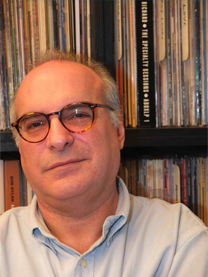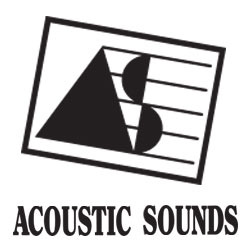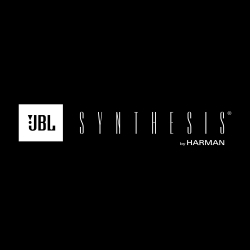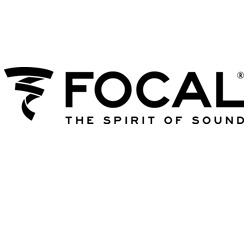Doncha just love loyalty? In a world where the number of practitioners of transmission-line loudspeaker design can be counted on one hand, it’s nice to note that such die-hards as these remain unshakeable in their devotion. And that’s after years of insults from reviewers who decry the format’s tendency toward “one-note” bass, lower-register lumpiness and the occasional dosage of boom. So how do transmission line-supporters defend themselves? Easy: transmission-line loading remains one of the most effective ways of extracting deep bass from a small box. The reason why it’s not more popular has to do with the disappearing skills of carpenters able to produce extra-complex cabinetry rather than cost of manufacture or the demands it places on a system.
TDL’s history with transmission-line design (TL, for short) goes back further than most because TDL grew out of the ashes of the late, lamented Anglo-American speaker company, IMF. Having inherited a number of popular-in-the-Sixties designs, including the hefty “Reference” and “Studio Monitor” models, TDL carried on refining TL theory and practice, updating it when necessary. While it’s easy to trace TDL’s lineage back to specific designs of two or three decades ago, it should be noted that the company is also one of the pioneers of metal driver technology. TDL was one of the first to employ metal dome tweeters, while the model under review, the Studio 1m, extends the metalizing process to the woofer. So look past the logo, the catalogue illustrations and even the style of the text – all of which hark back to the days of IMF – and welcome what is most defiantly a modern design.
Standing 31.5in tall, with an extra 3.5in for the box-section-steel stands and spikes, the Studio 1m takes up no more space than a small two-way speaker on its mandatory 24in pillars. Because the Studio 1m is narrow-but-deep, at 9x14in, it’s hardly obtrusive. What’s more, it’s so visually undistinguished that you could easily overlook its presence despite the space it occupies. We’re talking featureless to a degree which makes the monolith in 2001 look like it was decorated by Bosch. The front is fully-covered by the cocoa-brown grillcloth with no cabinet edges showing, while the baffle, top, sides and rear all wear the same superb walnut real-wood veneer. And that’s it. Aside from the TDL badge, there’s absolutely nothing to suggest that the cabinet designer spent any more time working on its looks than was absolutely necessary. Maybe it’s just a case of form following function: this is a box and nothing more. The only aesthetic choices to be made are the black ash veneer/black grill option and the use of spikes directly fitted to threaded holes in the speaker’s underside, thereby omitting the stands and lowering the speaker a trace.
Still, TDL did include a couple of operational choices. The rear sports gold-plated terminals which allow for single- or bi-wiring or full bi-amplification, and the user can – if brave – dispense with the protective mesh grills supplied for the tweeter, for a small but noticeable increase in treble clarity. The grills are packed separately, in an envelope with the instruction manual, and they’re held in place by the drivers’ magnetic field. I’d have thought, given the warnings about not pressing up against the tweeters during the awkward unpacking stage, that TDL would ship Studio 1ms with the protective meshes in place, advising the tweakier listener to remove them after the speakers have been positioned in the listening room.
Remove the grill and you’ll see just what the mesh protects. At the top of each baffle is a 25mm suspended black-anodized aluminum dome tweeter, ferro-fluid-damped and incorporating its own rear chamber. It’s no more fragile than any other tweeter, so the need for a protective mesh is neither more nor less than for any drive unit, whatever the make, shape, material, size or political affiliation; the difference here is that TDL – like Tannoy, Sonus faber and a bunch of others – provides the option to remove the mesh for unmistakable sonic gains (versus a drop in peace-of-mind).
Directly below this dome is the 165mm bass unit, also black-anodized and fashioned from aluminum. At the center is a bullet-like phase plug, while behind is a Kapton voice coil former for high power handling and a vented-pole magnet residing in a cast alloy chassis. This driver’s rear output fires into the transmission-line “tunnel”, which runs down the back of the cabinet to the bottom, where it then curves up toward the center of the baffle (just below the woofer), finally firing downward again. It terminates in openings consisting of two foam-filled rectangles per speaker, at the base of each baffle. The entire tunnel is lined with textured foam to provide the appropriate damping and resonance control, and the Studio 1m is free of the wind-rushing whoosh I remember from some earlier TL designs.
Mounted on the inside of the rear panel, directly behind the bass driver to minimize internal cable length, is the crossover network. It’s a 12-element design providing this two-way system with a 4th order crossover at 2kHz. TDL specifies the Studio 1m aa operating over the 28Hz-20kHz range, probably +/-3dB, with a nominal impedance of 8 ohms and sensitivity in the “medium” category, at 86dB for 1W@1m. TDL recommends amplifiers rated between 30-120W, but I’d say the more watts the merrier.
TDL’s attention to detail is quite impressive: few companies bother to veneer their speakers’ baffles to the same standards as the visible parts of the cabinet. You can assume, however, that TDL anticipates a number of its customers as using the speakers sans grills because they’ve even added a TDL badge to the baffle. Prettier though they might be because they’re finished in matching shades of black, the two drivers aren’t anodized merely for looks; the anodizing adds to the drivers’ stiffness, raising the break-up resonances to beyond the audible frequency range. All of the components on the circuit board are top-quality and the internal wiring consists of OFC cable instead of rot-gut bell-wire.
Adding metal woofers to tweeters made from the same material eliminates a whole type of potential discontinuity, the sort which is prevalent (or potentially so) in any loudspeakers which mix material types between the woofer and the tweeter. It’s possible that TDL’s designers are especially sensitive to the matter of top-to-bottom coherence because transmission-line technology almost forces a signature sound onto a speaker design; it’s arguable that the drive units have to fight the enclosure itself. But TDL’s long experience with transmission-line design has resulted in extended lower-octave performance that’s virtually free of the thumping, one-note sound which characterizes less-successful TL offerings.
Much is made of the big-sound-from-a-small-box nature of TL systems by TDL, even suggesting that the 1m might work well in a small-ish room. My studio is no vast cavern, but 15×24 feet is slightly above the British average, so the TDLs weren’t suffering from claustrophobia. As TDL recommendeds, I installed them with a bit of toe-in, aimed at the hot seat. The triangle this positioning created resulted in the TDLs being 7ft apart, with the listening seat eight feet from the line of the speakers. Although TDL delights in saying that TL speakers are not room-fussy, I had to position the Studio 1ms 40in from the rear wall to avoid room interference. [Note: Do yourself a favor and send a few bucks to Dave Wilson at Wilson Audio for a copy of his instructions for installing WATT/Puppies. His system works for nearly every box-type loudspeaker I’ve tried, and it will save you hours of insane set-up torture. The Studio 1m was a perfect candidate for Wilsonizing.]
A variety of sources fed the review system, mainly the Primare 204 CD player, the Krell MD-20/Reference 64 transport/DAC combination and the Michell Gyrodec turntable with SME-IV arm and Lyra Clavis cartridge. Pre-amps included the Classé DR-4 and Krell KRC solid-state designs and the Audio Research LS7 tube unit, while power amplifiers chosen for their various power outputs and topologies were the Audio Research VT60 (50W/channel), the Unison Research Smart 845 (26W single-ended triode monoblocks) and Krell’s 300W MDA300 monoblocks. Speaker wire consisted of XLO Type 6, while interconnects included models from XLO and A.R.T.
My last experience of a TDL design was some years back, with the Studio 0.5, then the company’s smallest transmission-line design and some 30 percent smaller than the Studio 1m. While it wears a metal tweeter, its woofer is a composite. So I wasn’t quite prepared for the gains in the overall coherence, however much the 1m appeared to be a traditional TDL product. Bass was unmistakably “transmission-line”, and I don’t mean that in a perjorative nor a complimentary way. It’s just that bass from a TL system is so distinctive that I know people who can – with eyes closed and ears open – pick out a transmission-line system from any group of speakers you may care to demonstrate to them. (This isn’t so odd. I know guys who’ll run screaming if polarity needs inverting, if silver wire is in use, if valves need biasing, what have you. That’s why they’re called “Golden Ears”.)
Which is why you buy TL designs in the first place: you want lots of rich, deep, unconstrained bass from a box with a small footprint and a fairly sane appetite for wattage. And that most certainly describes the Studio 1m, which sounds – by virtue of the power and weight of its lower registers – like a speaker of twice its cubic volume.
Because most people, especially audiophiles, know that there’s no such thing as a free lunch, you have every right to expect that there’s some price to pay for this lower-octave largesse. And you do detect vestiges of boom, trace elements of one-note performance, a smidgen of lumpiness. And so you have to weigh the options: lots of bass with minor imperfections from a speaker that’s easy to drive OR a top-quality mini for the same money, with no low-end anomalies…and no low end to speak of OR a big-bucks/big system needing a big amp.
And just so you don’t think that the Studio 1m is a compromise or – worse – a renunciation on a par with sacrificing your first-born, note that the top-to-bottom coherence rivals even certain full-range, single-driver panel systems. Note, too, that the TDL gives you bass with extracting the cost to the sound which is levied by many subwoofers: the midband and treble regions suffer neither smearing nor imagery debilitation. If anything, the Studio 1m has an eerie ability to sound – in the mid and treble – like a hot mini-monitor, so three-dimensional and precise is its recreation of a sound stage. But the bass lets you know this ain’t no loaf-of-bread-sized British dwarf.
Using Donna Summer’s recent “greatest hits” package, the new 4CD Abba box set and anything else I could think of which would torture-test the TDL for both lower-register ailments and metal driver nasties, I was staggered to hear such big speaker behavior regardless of source or material. And that’s without any of the anticipated tweeter sizzle I dread with some metal tweeter’d systems, nor the heightened bass transients I feared the new woofers would produce. This was not the disco thumping of an overdamped, constipated acoustic-suspension mini; neither did it kick in your chest, pro monitor style. Forget TDL’s fascination with the terms “studio” and “monitor” – these things are too damned good for half-deaf studio denizens, who prefer dBs over quality every time.
Best of all, these hardly-huge speakers – not outrageously expensive at $2000 per pair – prove in spades that the British are not afraid of bass. Nor incapable of delivering it.
(Audio, 1995)






















